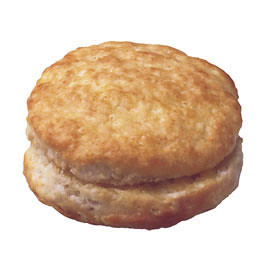Have you ever needed to assemble two pieces of wood side to side to make one consistent plank? Have you ever wanted to join a facia piece of material to its base without the need for unsightly fasteners? Are you guilty of overusing pocket holes and screws everywhere? Is there a better solution? Of coarse there is. It's the tool I never knew I needed but now don't know how I ever lived without it. It's the Biscuit or Plate Joiner.
Sounds delicious, right? No no, not those biscuits. Then what is it?
Most simply put, the tool is a calibrated slot cutter. The joiner itself has a blade set back within the tool that allows you to plunge the blade into the wood to cut a slot in the side of your material. That slot's depth is dependent on the size of biscuit you are using, and is positioned evenly with another similar slot on the adjoining piece of wood. You then glue inside the slot, insert a wood biscuit, then push and clamp the two pieces of material together.
The biscuit is a small piece of soft wood shaped sort of like a little football. When inserted in the cut, it fills most of the slot on either side. As the glue dries, the biscuit absorbs some of the water and expands, creating an extremely strong and long lasting joint, almost as if the two items being joined were now one piece of wood.
Back when I was first starting to draw up a plan for our built in desk I was also watching a lot of New Yankee Workshop. I knew I wanted to attach the face frame of the desk to the cabinet boxes without mechanical fasteners like screws and nails, so I started to pay attention to how pros tend to do it. That's when I noticed everyone using biscuit jointers. I also knew I wanted the top of the desk to be several pieces of cherry combined into one, so I figured it was a good time to look into purchasing this tool.
Research was rather easy as there were only a few models on the market that were getting consistently good reviews. I was able to try out a DeWalt model that i liked at our hardware store, so I went that route.
The model I purchased has a setting for standard 0, 10, and 20 sized biscuits (smallest to largest). It also has a basic dust removal port and ability to hook it up to the vac or dust collection system (which is very important for this tool). The cutting head and baseplate are adjustable and can be moved up, down, and angled to achieve the particular cut you are looking for.
Along with the joiner itself, I purchased three bags of biscuits, one in each size. I find I more typically use the size '20' biscuits on the majority of projects, or '0' size of the more detail oriented projects with minimal allowance for depth of cut, but I rarely use the '10' size.
I've also long coveted this very expensive yet extremely effective biscuit glue applicator. Sure it's a $100 glue bottle...but maybe Santa will bring it for Christmas.
I'm so happy I purchased this tool. I've used it on our desk, our closets, door casings, garden posts, door extensions, and several other places. Every time I run into a situation where I need to make two pieces of wood become one with an extremely solid joint, I look to our biscuit jointer.
If you're looking for some last minute gift ideas for the DIY woodworker in your family, find out if they have a biscuit plate joiner. If not, buy them one and a few bags of biscuits and you'll become their favorite shop guest for sure.
Did you enjoy reading this post? Want to learn more about our first-hand experiences with other tools, devices or items used throughout our renovation? If so, check out our complete list of product reviews in our Toolbox Tuesday section.
Note: We weren't compensated for this review. We simply want to share good products when we see them, and hope that learning from our mistakes can help save you time, money and frustration.

![]()
![]()